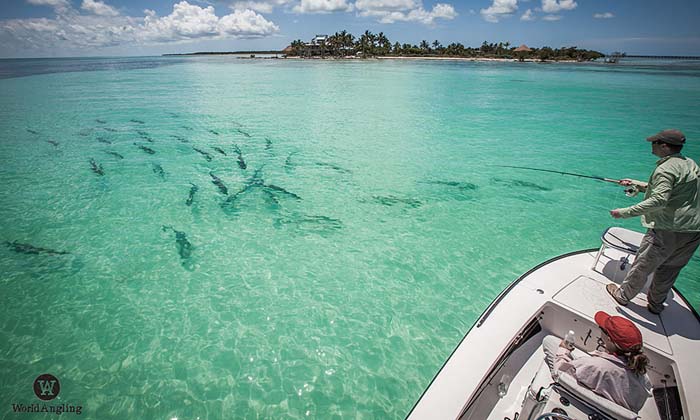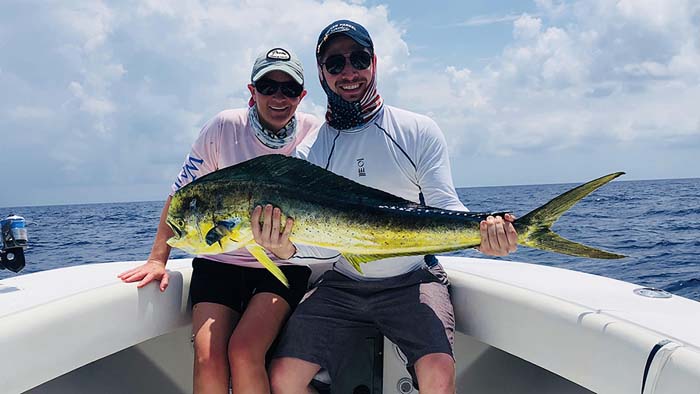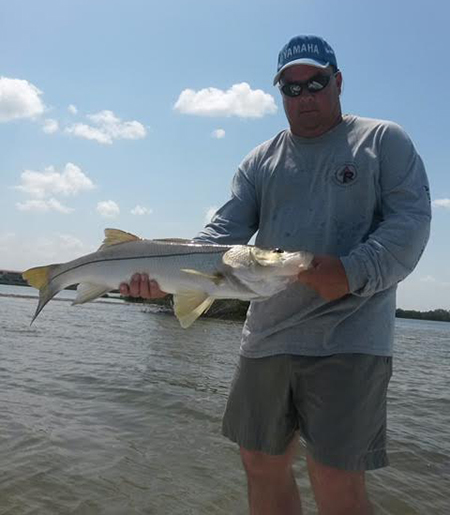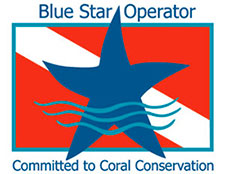
Image courtesy of Will Benson, World Angling Key West, Florida.
NOAA and Florida Keys fishing guides partner to support sustainable recreational fishing
by Kennedy Gullatte / NOAA Marine Sanctuaries / October 2018
[dropcap]L[/dropcap]ong considered an angler’s paradise, the sandbars, flats, channels, and reefs in the Florida Keys provide year-round opportunities for anglers who dream of catching a “fish of a lifetime.” These lush habitats support charter fishing captains and guides whose livelihoods depend on a healthy, productive ecosystem.
The Blue Star Fishing Guide program recognizes charter fishing captains who are committed to sustainable fishing practices and educating their customers about resource protection in Florida Keys National Marine Sanctuary. The voluntary training and compliance program seeks to increase fishing guides’ knowledge and, ultimately, that of their clients, to conserve the mangroves, seagrass meadows, and reefs that are the foundation for world-class fishing in the Florida Keys.
Becoming a Blue Star Fishing Guide is not only a step towards conserving the Florida Keys, but also protects the fisheries we rely on each day for charters,” says Tony Young, owner of Forever Young Charter Company in Islamorada. “It is in each operator’s best interest to go Blue Star and educate their clients on sustainable fishing practices.”
In 2017, 41 percent of visitors participated in recreational sport fishing, according to the Monroe County Tourist Development Council’s visitor profile survey. Florida Bay, edged by the inner curve of the Keys and the Florida mainland, is referred to locally as the backcountry. It is home to five of the most sought-after game fish among recreational anglers: bonefish, tarpon, permit, redfish (red drum, and snook. Off the Keys’ outer curve and the nearby Gulf Stream lies the Atlantic Ocean. Blue and white marlin, sailfish, and swordfish inhabit these deep-sea areas.

Todd Anderson and Gina Crook from Dallas, Texas, hold a dolphinfish they caught on a Boneafide Charter Company fishing tripe. Boneafide is Blue Star Fishing Guide operator. Photo: Boneafide Charter Company
Debi Gabriel, of Boneafide Charter Company in the Lower Florida Keys, says the Keys offers unrivaled outdoor experiences as well as the opportunity to educate visitors about the principles of sustainable recreation. “We became involved with the Blue Star Fishing Guide program because we are the eyes and ears of the Florida Keys sanctuary,” she says. “Teaching people about how important it is to conserve, preserve, and educate is what we feel needs to be done in order to sustain our precious fishery.”
Captains and guides in the program receive online training that covers general education about the sanctuary, its diverse habitats, and its fisheries. They also learn best practices that include using gear suited to the size of fish targeted and employing proper techniques and tools to revive fish if they are released. Blue Star Fishing Guide operators are required to follow legal and ethical standards as well as conservation measures such as proper fish handling. Program guidelines also encourage the use of barbless circle hooks whenever practical, and limit catch to what clients want for their own use. The program also encourages respect for other anglers.

Jim Loftus, owner of Mile Marker 27 Fishing Charters, holds a snook. Mile Marker 27 is a Blue Star Fishing Guide operator. Photo: Mile Marker 27 Fishing Charters
Blue Star Fishing Guide operators receive branded materials to market their business as a sanctuary partner, plus educational materials to share with clients and customers on their vessel. Annual evaluations ensure compliance with program criteria and continued program excellence.
Gabriel and other guides say the need for angler education is painfully evident in the negative impacts on the Key’s sensitive marine habitat that they see when they’re on the water. Guides witness anchor damage to corals, propeller scars in seagrass meadows, entangled and discarded fishing line, abandoned traps, and trash.
“We pick up trash on every trip,” Gabriel says. “It’s really sad. We educate anglers every day that it is so important to keep the bays and the oceans clean and to not teach their trash to swim. Especially the bait boxes. I pick up a lot of those every week.”
Adds Young: “We see a lot of people anchoring on the coral in shallow reefs, fishing in areas they are not supposed to, and taking fish that are undersized or out of season. Some visitors do not know, but many simply ignore the regulations and laws that are set in place to protect the Florida Keys.”
In addition to pollution and poor boating practices, guides say many visitors lack basic awareness about the sanctuary and their surroundings.
“Most clients are from outside the local area and really don’t have sanctuaries in their backyard or even realize they’re fishing in one until you tell them,” says Jim Loftus, owner of Mile Marker 27 Fishing Charters on Ramrod Key.
Young and other Blue Star guides say they are committed to helping the Keys remain a world-class fishery for current and future generations.
The Florida Keys are a year-round fishing destination,” says Young. “The fishing is consistent, easily accessible, and inviting for every experience level. We are truly blessed to have the fisheries we do in the Florida Keys and as charter operators, it is our duty to protect it.”
The Blue Star Fishing Guide program was created by Florida Keys National Marine Sanctuary and the National Marine Sanctuary Foundation, in cooperation with NOAA Fisheries, Florida Fish and Wildlife Conservation Commission, Keep Florida Fishing, American Sportfishing Association, Coastal Conservation Association Florida, and Bonefish and Tarpon Trust.
 If you’re planning a fishing trip to Florida Keys National Marine Sanctuary, consider a Blue Star Fishing Guide when making your charter reservations, so that you, too, can contribute to a sanctuary that will thrive and support sustainable sportfishing for generations to come. Fishing guides interested in becoming a Blue Star operator should contact the coordinator at bluestar.fishing@noaa.gov.
If you’re planning a fishing trip to Florida Keys National Marine Sanctuary, consider a Blue Star Fishing Guide when making your charter reservations, so that you, too, can contribute to a sanctuary that will thrive and support sustainable sportfishing for generations to come. Fishing guides interested in becoming a Blue Star operator should contact the coordinator at bluestar.fishing@noaa.gov.
About
Kennedy Gullatte is a volunteer communications intern for NOAA’s Office of National Marine Sanctuaries and a sophomore at Florida A&M University.

